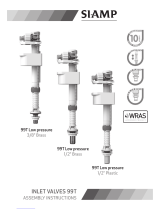
Contents
Chapter 1. About this manual .....1
Important Safety Information .........1
Important information about replacing RoHS
compliant FRUs .............2
Chapter 2. Safety information .....3
General safety ..............3
Electrical safety .............3
Safety inspection guide ...........5
Handling electrostatic discharge-sensitive devices . . 6
Grounding requirements ..........6
Safety notices (multi-lingual translations) .....7
Chapter 3. General information ....37
The ThinkVantage Productivity Center program . . 37
Additional information resources .......37
Specifications ..............38
Machine types 8290, 8291, 8292, 8463, 8464, 8465,
8469, 8472, 8708, 8709, 8712, 8713, 8719, 8771,
8772, 8776, 8777, 8817, 9214, 9215, and 9216. . . 38
Machine types 8293, 8294, 8295, 8466, 8467, 8468,
8473, 8474, 8710, 8711, 8714, 8715, 8773, 8774,
8778, 8789, 8818, 8819, 9217, 9218, and 9219. . . 39
Chapter 4. General Checkout .....41
Problem determination tips .........41
Chapter 5. Diagnostics using
PC-Doctor for DOS .........43
Starting PC-Doctor from a diagnostic diskette or
CD-ROM ...............43
Diagnostics program download........43
Navigating through the diagnostics programs . . . 44
Running diagnostics tests..........44
Test selection .............44
Test results .............44
Fixed disk advanced test (FDAT) ......45
Quick and Full erase - hard drive ......46
Viewing the test log ...........48
Chapter 6. Using the Setup Utility . . . 49
Starting the Setup Utility program.......49
Viewing and changing settings ........49
Using passwords ............49
User Password ............49
Administrator Password .........50
Selecting a startup device..........51
Selecting a temporary startup device .....51
Changing the startup device sequence ....51
Exiting from the Setup Utility program .....51
Chapter 7. Symptom-to-FRU Index . . . 53
Hard disk drive boot error .........53
Power Supply Problems ..........53
Diagnostic error codes ...........55
Beep symptoms .............76
POST error codes ............77
Miscellaneous error messages ........79
Undetermined problems ..........80
Chapter 8. Replacing FRUs (Tower
computers) .............83
Rear connectors .............84
Removing the covers ...........85
Locations ...............86
Identifying parts on the system board .....86
Machine types 8290, 8291, and 8292 .....87
Machine types 8463, 8464, 8465, 8712, and 8713 88
Machine types 8469, 8708, 8709, 8776, and 8777 89
Machine types 8472, 8719, 8771, 8772, 8817, 9214,
9215, and 9216 ............90
Removing and replacing the front bezel .....91
Replacing a memory module ........92
Replacing a PCI adapter ..........92
Replacing the CMOS battery.........93
Replacing the power supply .........94
Replacing the system board .........95
Machine types 8290, 8291, 8292, 8469, 8472, 8708,
8709, 8719, 8771, 8772, 8776, 8777, 8817, 9214,
9215, and 9216 ............95
Machine types 8463, 8464, 8465, 8712, and 8713 99
Replacing the microprocessor ........103
Machine types 8290, 8291, 8292, 8469, 8472,
8708, 8709, 8719, 8771, 8772, 8776, 8777, 8817,
9214, 9215, and 9216 ..........103
Machine types 8463, 8464, 8465, 8712, and 8713 107
Replacing the primary hard disk drive .....112
Replacing an optical drive .........113
Replacing the diskette drive ........114
Replacing the power switch/ LED assembly . . . 115
Replacing the front panel card........116
Completing the FRU replacement.......116
Chapter 9. Replacing FRUs (Desktop
computers) ............119
Rear connectors ............120
Removing the cover ...........121
Locations...............122
Identifying parts on the system board .....123
Machine types 8293, 8294, and 8295 .....123
Machine types 8466, 8467, 8468, 8714, and 8715 124
Machine types 8473, 8773, 8774, 8818, 8819,
9217, 9218, and 9219 ..........125
Machine types 8474, 8710, 8711, 8778, and 8779 126
Removing and replacing the drive bay assembly 127
Replacing a memory module ........128
Replacing a PCI adapter..........129
Replacing the CMOS battery ........131
Replacing the power supply ........132
© Lenovo 2006. Portions © IBM Corp. 2005, 2006. iii





















